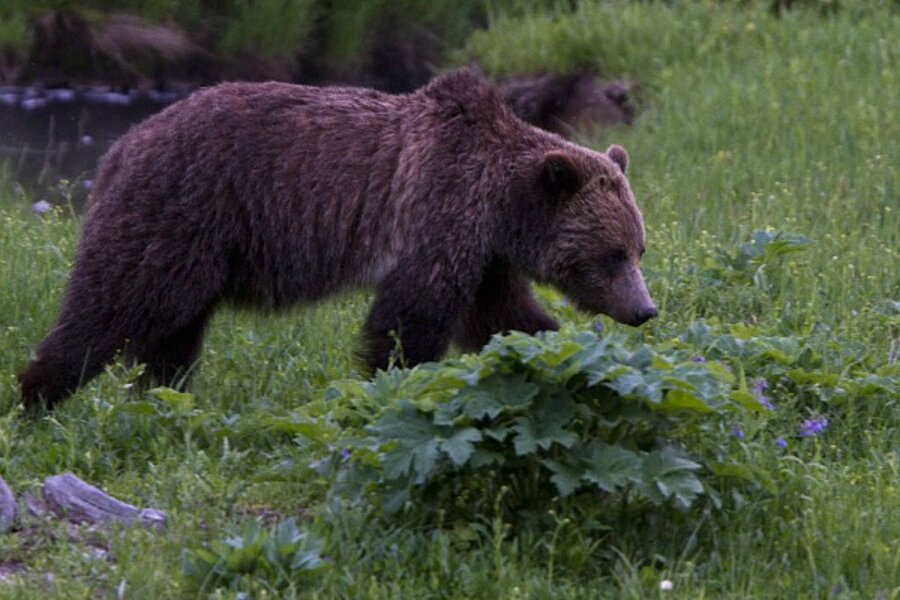Yellowstone grizzly attack: Why did it happen?
Loading...
The fatal grizzly bear attack on a hiker in Yellowstone National Park this week was the first in the park in 25 years.
But attacks on humans by grizzlies in the greater Yellowstone region – as well as other threatening encounters – are not unheard of, and this may be due to two converging trends.
One, the slow recovery of the grizzly bear from its federally protected status as a threatened species. And two, the number of visitors to Yellowstone – many of whom come to hike the trails where wildlife can be seen – has been growing by record numbers in recent years.
This has meant more opportunities for more people to see grizzlies in the wild, while also increasing the potential for danger.
In June 2010, a grizzly just released after being tranquilized for study killed an Illinois man hiking outside Yellowstone's east gate, the Associated Press reports. Last July, another grizzly killed a Michigan man and injured two others in a nighttime campground attack near Cooke City, Mont., northeast of the park. And earlier this year, a female grizzly injured two people hiking in the Gallatin National Forest north of Big Sky, Mont.
In this week’s attack, reports the National Park Service, a husband and wife had traveled about a mile and a half on Yellowstone’s Wapiti Lake trail when they surprised a grizzly sow with cubs.
“In an apparent attempt to defend a perceived threat to her cubs, the bear attacked and fatally wounded the man,” park officials said in a statement. “Another group of hikers nearby heard the victim’s wife crying out for help, and used a cell phone to call 911. Park rangers were summoned and quickly responded to the scene.”
Since then, patrols have been clearing the area of all backcountry users, and all trails and backcountry campsites in the area have been closed until further notice.
In the years since the last fatal grizzly attack in Yellowstone in 1986, the number of annual park visitors has grown by 50 percent to 3.6 million people.
Meanwhile, since its listing as “threatened” under the federal Endangered Species Act in 1975, the bear’s protected status has helped its numbers recover from threatened extinction in this part of the United States. (There are about 30,000 grizzlies in Alaska, but the grizzly population in the lower 48 states – about 1,000-1,200 – is still much lower than the estimated historic high of 50,000 bears, when grizzlies roamed over much of North America.)
Adult males can weigh as much as 1,500 pounds and stand nearly seven feet tall on their hind legs. Females give birth to tiny cubs (frequently twins) weighing just one pound. Cubs stay with their mothers for the next 2-4 years.
Though heavy and bulky, grizzly bears can run as fast as 35 miles per hour, which is why experts say people should not try to run from a threatening bear.
In the recent attack, the woman is reported to have dropped to the ground, been picked up by her backpack but then dropped by the attacking bear before the grizzly attacked the woman’s husband.
Hikers in grizzly country are told to make noise (whistling or ringing a bell) to announce their presence, and also to carry pepper spray. If a bear is encountered, walk slowly away.
“If a bear actually makes contact, surrender!” advises the US Forest Service. “Fall to the ground and play dead. Lie flat on your stomach, or curl up in a ball with your hands behind your neck. Typically, a bear will break off its attack once it feels the threat has been eliminated. Remain motionless for as long as possible. If you move, and the bear sees or hears you, it may return and renew its attack. In rare instances, particularly with black bears, an attacking bear may perceive a person as food. If the bear continues biting you long after you assume a defensive posture, it likely is a predatory attack. Fight back vigorously.”





